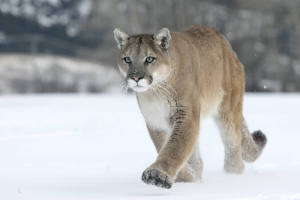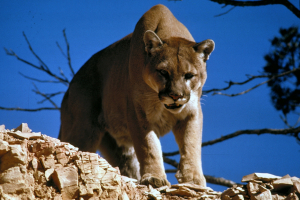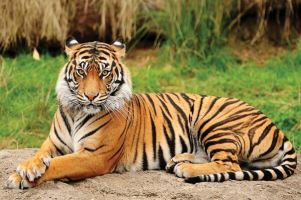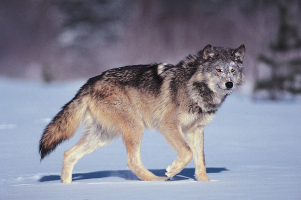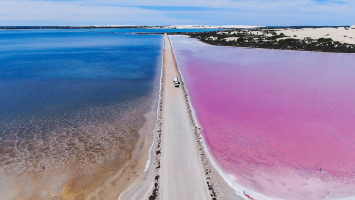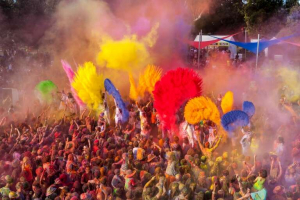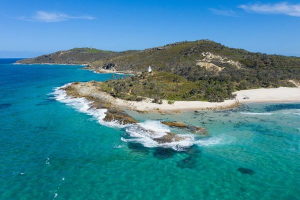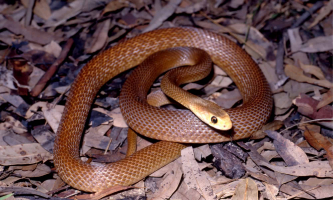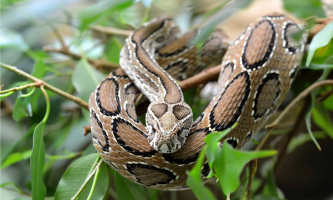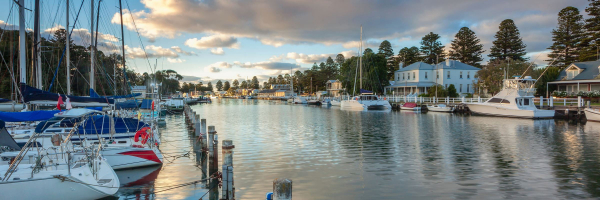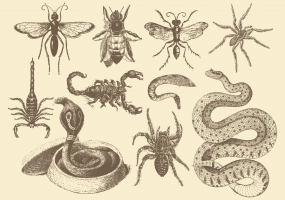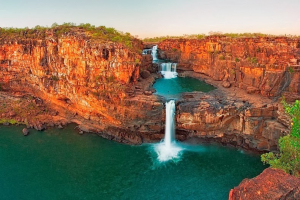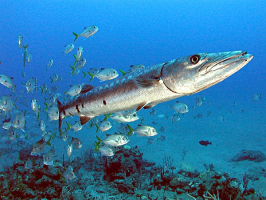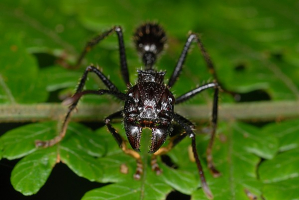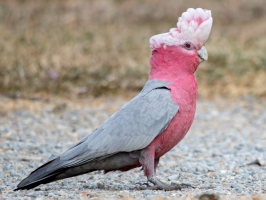Top 10 Most Dangerous Animals in Australia
The animal world is extremely diverse and rich. Many animals are impressed by their beautiful appearance, friendly personality, there are also very dangerous ... read more...animals. Let's find out with Toplist the most dangerous animals in Australia!
-
Cnidarian invertebrates known as box jellyfish can be identified by their body shape. Some box jellyfish species generate powerful venom that is released upon contact with their tentacles. Some species, including as Chironex fleckeri, Carukia barnesi, Malo kingi, and a few others, sting people very painfully and frequently result in death.
Although they are rare in tropical and sub-tropical environments, Australian Box Jellyfish are prevalent in the Indo-Pacific region. They typically reside along the northern Australian coast, however during the hotter summer months, these invertebrates swim closer to the shore to nest in estuaries.
The box jellyfish's tentacles contain venom that can paralyze a victim and cause cardiac arrest in about one or two minutes by attacking the neurological system within minutes. A human can only experience shock because of the sting's agony. Box jellyfish can be lethal to people and may not be apparent in muddy regions because they lay their eggs in the estuaries of northern Australia during their breeding season.
The bell of the box jellyfish medusa, from which it gets its name, is square and box-shaped. A short stalk, or pedalium, with one or more long, thin, hollow tentacles hangs from each of the four lowest corners of this structure. A velarium, or shelf formed by folding the bell's rim inward, limits the aperture of the bell and produces a strong jet when it pulses. Because of this, box jellyfish have been observed to swim up to 6 meters (20 feet) per minute, which is faster than other jellyfish.
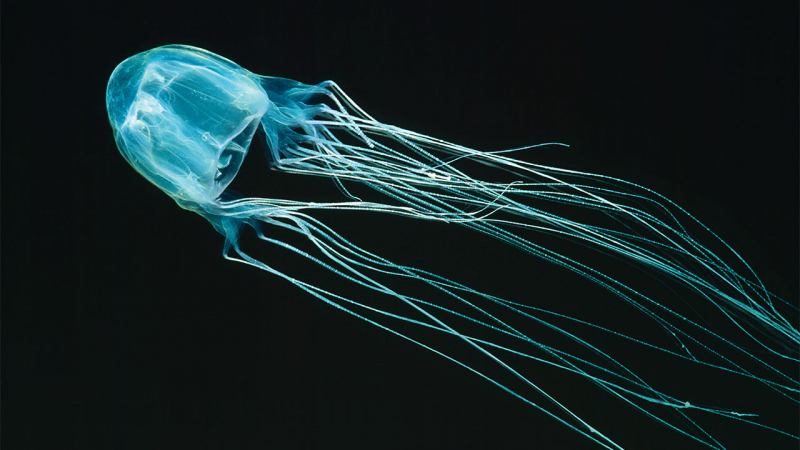
Photo: science.org 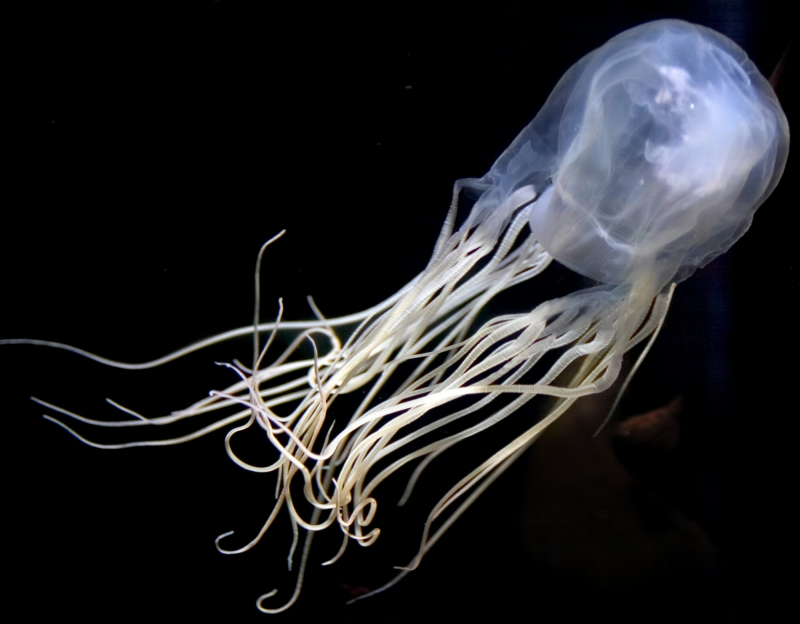
Photo: cnn.com -
The next position on the list of the most dangerous animals in the world is the honey bee. The genus Apis of the bee clade, which includes honey bees, is a group of eusocial flying insects that are all indigenous to Afro-Eurasia. Humans are to blame for the current global distribution of honey bees after they introduced various subspecies into South America (early 16th century), North America (early 17th century), and Australia after bees spread naturally throughout Africa and Eurasia (early 19th century).
Honey bees are renowned for building long-lasting colony nests out of wax, for the size of their colonies, and for the abundance of honey they produce and store. These traits make honey bee hives a coveted foraging target for many species, including honey badgers, bears, and human hunter-gatherers. Although previously 7 to 11 species have been recognized, there are only eight recognized species of honey bees that are still alive today, with a total of 43 subspecies. Only a small portion of the 20,000 or so species of bees that are recognized as being alive today are honey bees.
You might be astonished to learn that in Australia, honey bees cause more fatalities each year than both spiders and sharks. This is because 3 percent of people are allergic to bee stings; therefore, if you are allergic, the prevalence of bees in the nation puts you at an increased risk of harm. Even people who are not allergic can experience severe symptoms including breathing difficulties.
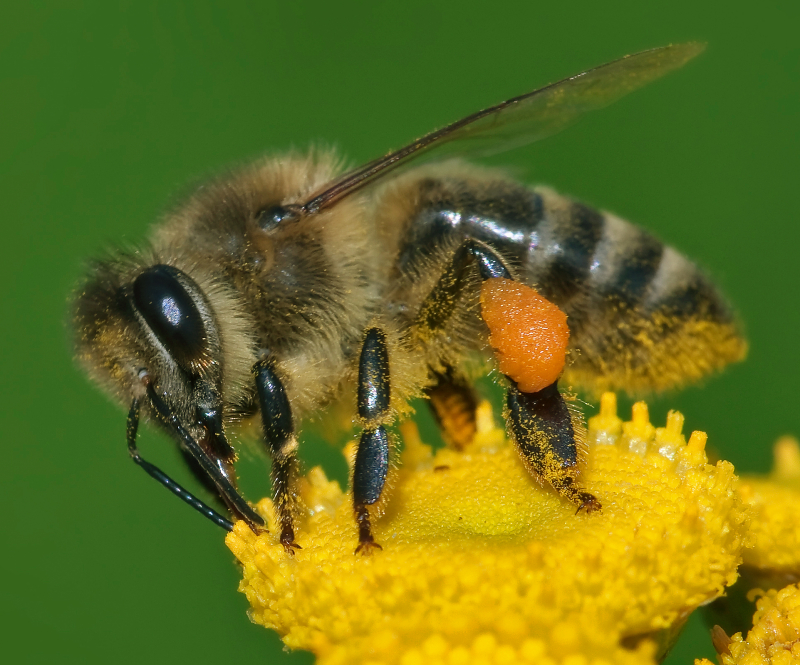
Photo: wikipedia 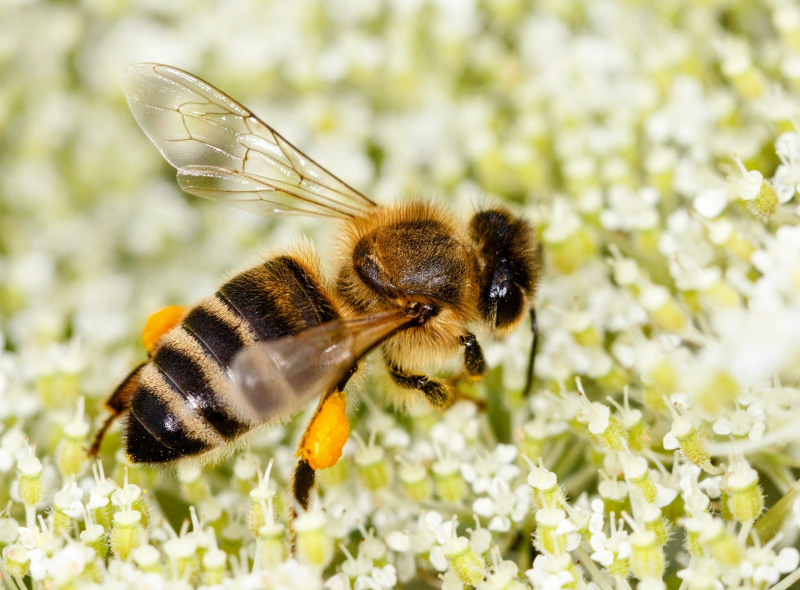
Photo: earth.com -
The extremely deadly Irukandji jellyfish is one of a number of closely related box jellyfish species. They are the smallest and one of the most dangerous jellyfish in the world, with adult sizes that are only a little over 1 cm3. They live in Australia's northern marine waters. They have the ability to inject their stingers into their victim, resulting in the potentially lethal disease known as Irukandji syndrome. There are approximately 16 species of Irukandji that are recognized, the most well-known of which are Carukia barnesi, Malo Kingi, Malo maxima, Malo Filipina, and Malo Bella.
Two persons have died from the Irukandji syndrome in the past. It is crucial to get medical assistance right away if you experience any Irukandiji jellyfish symptoms since this is what will happen if you are not hospitalized and treated. The syndrome manifests as nausea, anxiety, sweating, cramping, and lower back discomfort.
The Irukandji jellyfish can be found in Australia's northern waters. On Australia's east coast, the southernmost point of the Irukandji's range has been gradually shifting southward. Irukandji stings have been observed more frequently near Great Palm Island, which is off the coast of north Queensland close to Townsville. Early in December 2020, there had been reported 23, nearly twice as many stings than there had been in all of 2019, at 12. Given that the species' symptoms have been observed off the shores of Florida, Japan, and Britain, some are thought to have moved farther north.
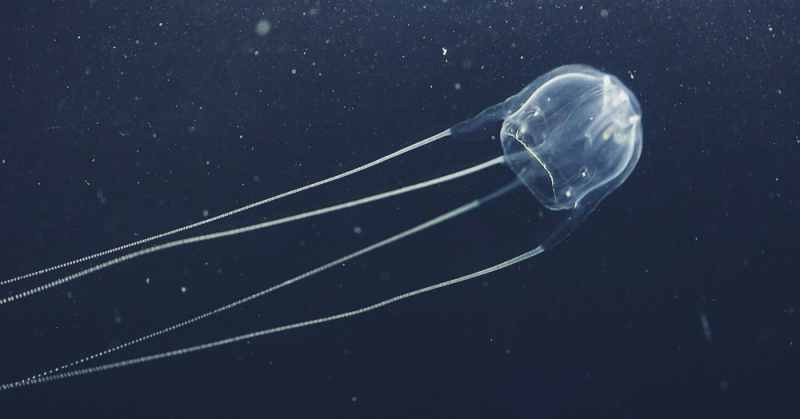
Photo: howtodoright.com 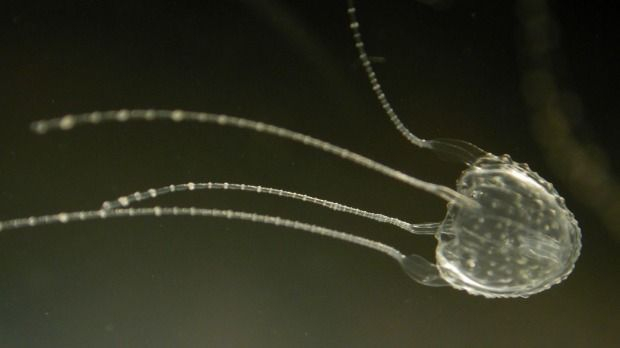
Photo: aithm.jcu.edu.au -
One of the most dangerous animals in the world is the bull shark. The bull shark is a requiem shark that is often found around the world in warm, shallow waters along coasts and in rivers. It is also known as the "Lake Nicaragua shark" in Nicaragua and the "Zambezi shark" in Africa. It is well recognized for its hostile behavior and for existing in warm, shallow brackish and freshwater environments, including estuaries and rivers.
This animal is more in line with what you might anticipate seeing on this list. The bull shark's snout, which it uses to head its victim before attacking, is how it got its name. These animals, which range in length from 2 to 3.4 meters to 7 feet, are very swift, agile, and aggressive. In actuality, the bull shark is regarded as the world's most dangerous shark.
All tropical shorelines have bull sharks nearby. You might also see bull sharks in estuaries and even rivers because they are known to migrate inland through freshwater. They are particularly harmful because of their flexibility and wanderlust. Bull sharks may attack people out of curiosity if they mistake them for an animal, even though humans are not typically part of their diet (which includes everything from dolphins to small fish). In fact, this shark is among the top three sharks that could attack a person.
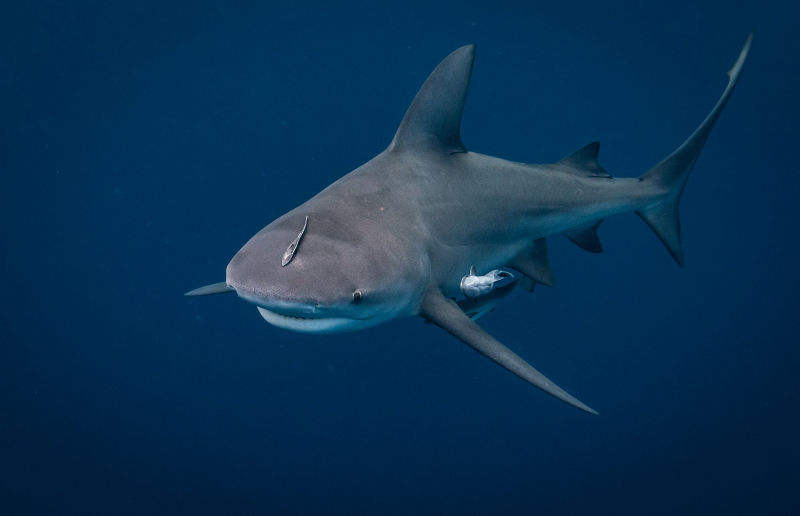
Photo: ustraliangeographic.com.au 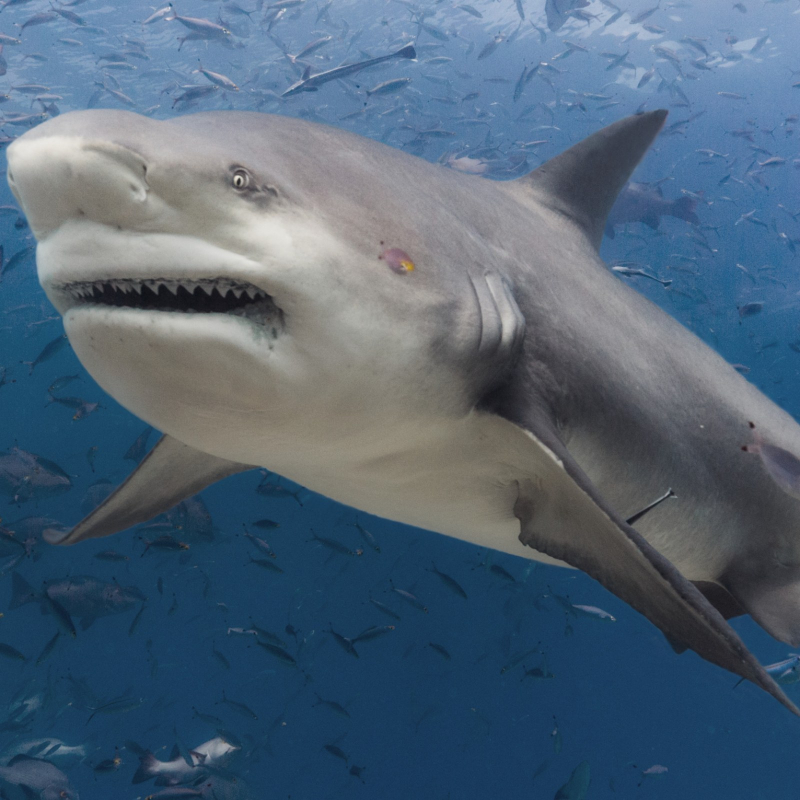
Photo: newsweek.com -
A species of very venomous snake in the family Elapidae is known as the eastern brown snake, sometimes known as the common brown snake. The native range of the species includes southern New Guinea and eastern and central Australia. In 1854, André Marie Constant Duméril, Gabriel Bibron, and Auguste Duméril published the first account of it.
Eastern Brown snakes, as their name suggests, are brown in color, yet the shade and pattern of their scales can vary greatly depending on the subspecies and the age of the snake. Although they have been seen as long as 2.4 meters, their usual length is between 1 and 1.8 meters. They are ranked as the world's second-most venomous snake.
The adult eastern brown snake is thinly built and can reach a length of 2 m (7 ft). Its underside has a light cream-yellow color that is frequently speckled with orange or grey. Its surface varies in color from pale brown to black. The eastern brown snake can be found in most settings, with the exception of deep woods. It is frequently seen on farms and on the outskirts of cities because house mice, its primary prey, live there. It is an oviparous species. Although its status in New Guinea is unclear, the International Union for Conservation of Nature classifies the snake as a species of least concern.
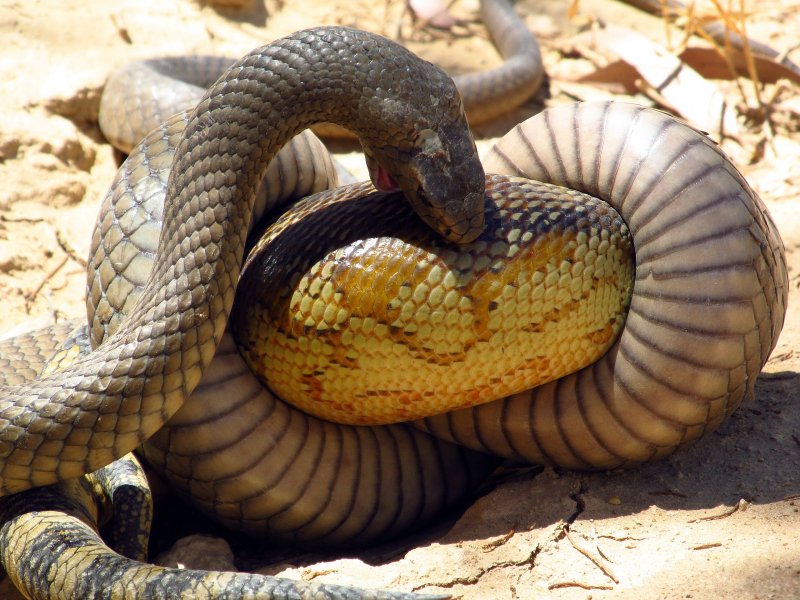
Photo: wikipedia 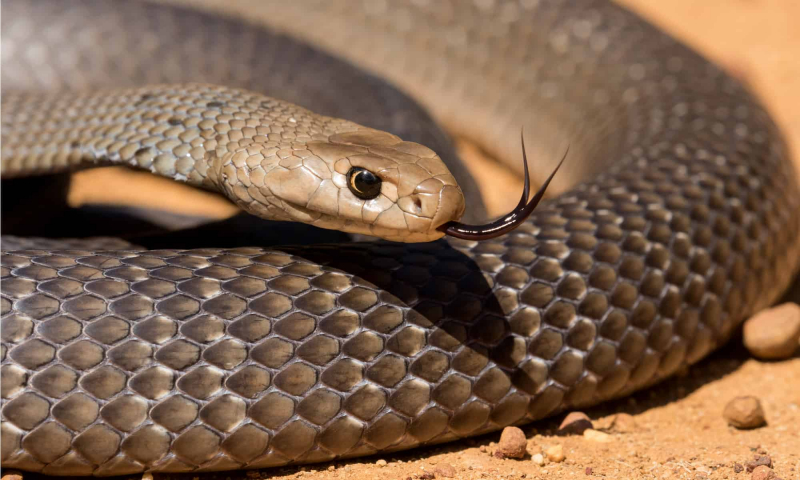
Photo: a-z-animals.com -
There are 300.000 of these species globally, and Saltwater Crocodile is currently listed as an endangered species on the Great Barrier Reef. It is also known as the Estuarine Crocodile. Because they are innate predators, these crocodiles will attempt to capture any living thing to consume. Their tail, which can grow to a length of 17 feet (5 meters), is another potent tool they use to defeat their victims. These crocodiles are aggressively playful with their prey and can jump from the water's edge to catch them. If necessary, they can even surf over the water, demonstrating the strategic aspect of this animal's hunting.
Although there have been reports of these animals in the area's estuaries and even in freshwater, Saltwater crocodiles are primarily found in saltwater around the northern Australian coast.
Despite the fact that this species may truly beat and quarter a human to death, there have been relatively few human deaths due to saltwater animals throughout Australia's history due to their low population and obvious warning signs in their habitat. Large and opportunistic hypercarnivorous apex predators include saltwater crocodiles. Most of its prey is ambushed before being drowned or swallowed whole. Almost every animal that enters its region can be defeated by it, including other apex predators like sharks, different freshwater and saltwater fish species, pelagic species, invertebrates like crabs, and different amphibians, reptiles, birds, and mammals, including humans.
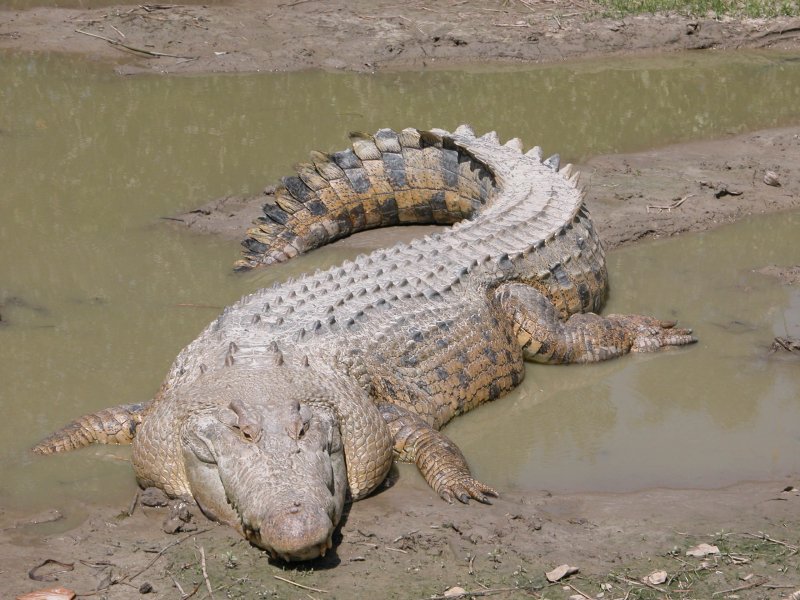
Photo: wikipedia 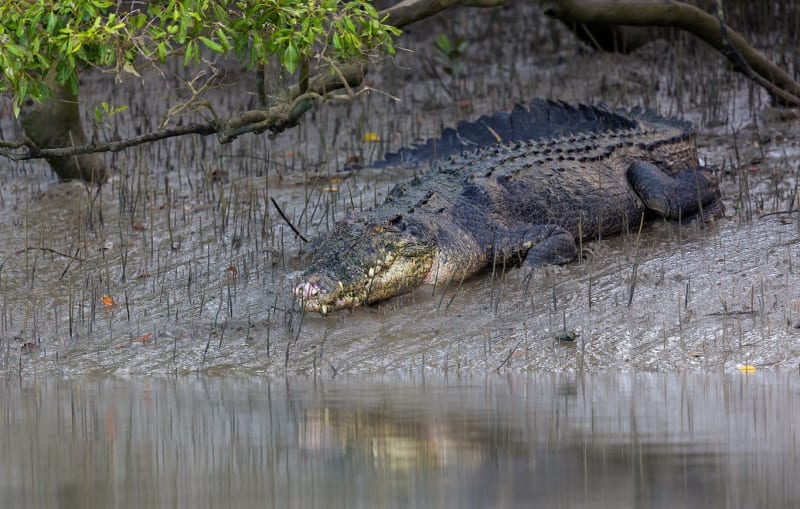
Photo: roundglasssustain.com -
The Sydney Funnel Web Spider is a nocturnal creature that, unless its hiding location is inundated, burrows during the day. Despite having legs that may extend up to 7 centimeters, these spiders only have a 5 cm length. Their shiny, hairless carcass serves as their identifying feature.
Australia's east coast, from northern Queensland to Tasmania. Although funnel-webs can also be found in trees, they are typically found in burrows dug into the ground, particularly those located beneath deadwood, boulders, pipes, etc. They are primarily found in Sydney's suburbs and open woodland regions.
The Sydney Funnel web spider's venom is extremely dangerous, more so in males than in females, who have far lower levels of venom toxicity. In fact, it is regarded as the world's most deadly spider! Despite having claimed the lives of 14 people throughout Australia's history, no deaths have taken place since the introduction of antivenom in the 1980s. The Sydney Funnel Web Spider's bite, however, necessitates hospitalization since its venom might injure your nervous system. They are readily avoidable because the silky strings found in holes are a reliable indicator that you are in front of a funnel web spider burrow.
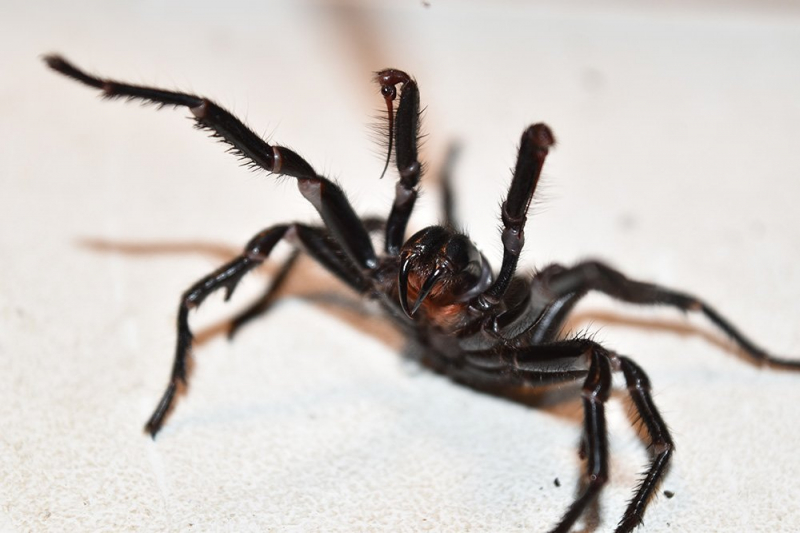
Photo: australiangeographic.com.au 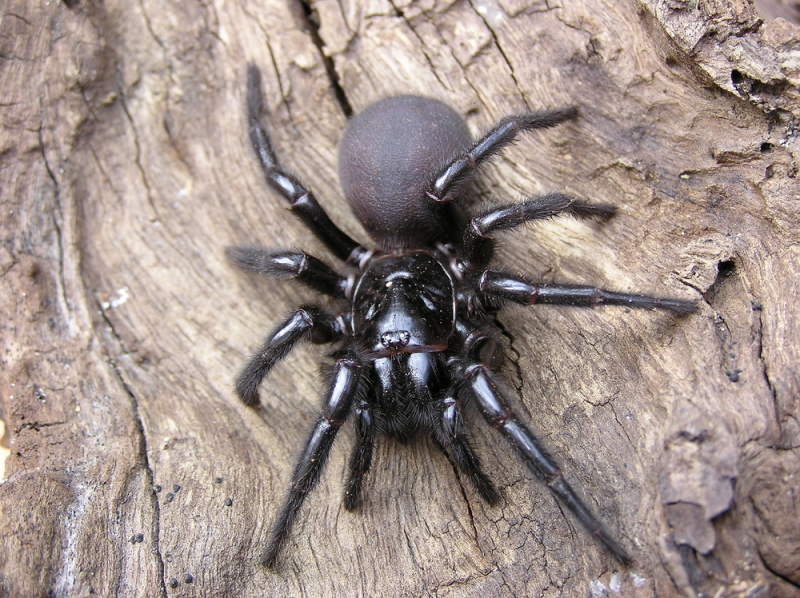
Photo: livescience.com -
Four extremely dangerous octopus species belonging to the genus Hapalochlaena, known as blue-ringed octopuses, can be found in coral reefs and tide pools in the Pacific and Indian oceans, from Japan to Australia. They can be recognized by their characteristic blue and black rings, which change color dramatically when the animal is attacked, as well as their yellowish skin. They consume tiny crustaceans including crabs, hermit crabs, shrimp, and other tiny marine creatures.
The blue-ringed octopus isn't inherently aggressive. Even though it appears entirely brown, it has the ability to change color in order to disguise itself from predators. Its tentacles will form iridescent blue rings on them if it senses a threat. Any predator that tries to disturb the blue-ringed octopus will be poisoned by these blue rings. The average size of these stunning cephalopods ranges from 2 to 20 centimeters.
They are not at all dangerous if you leave them alone and refrain from touching them. Tetrodotoxin, the venom that can damage humans, is produced by the blue rings that the octopus produces when it senses a threat. This venom can cause the body to emit neurotoxins that can paralyze you and stop your breathing. The blue-ringed octopus is one of the most dangerous animals in the world.
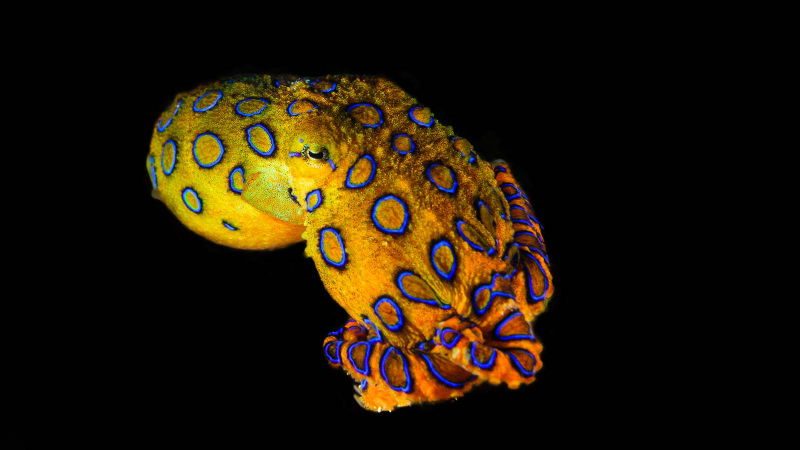
Photo: animals.howstuffworks.com 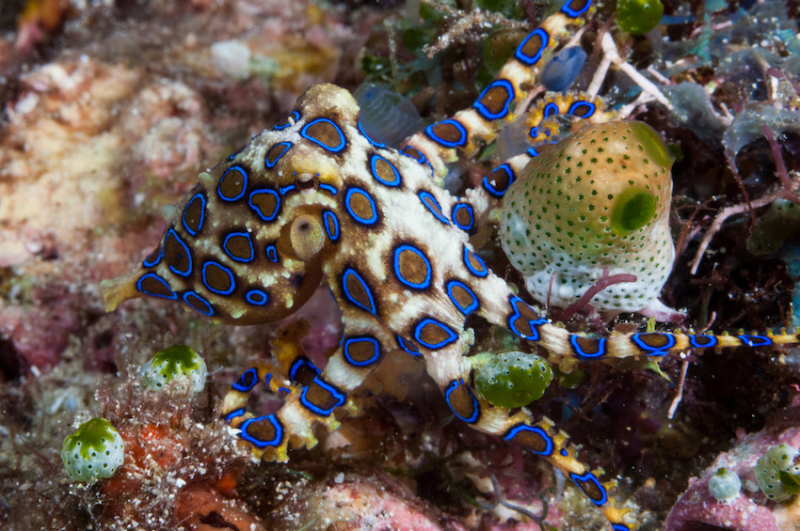
Photo: zubludiving.com -
The coastal taipan can be found in a variety of natural settings, including sugarcane fields, monsoon woods, and open woodland. It primarily hunts and consumes small mammals, and it occasionally preys on birds. It is an oviparous species. The largest poisonous snake in the nation is the coastal Taipan. Its venom can cause internal bleeding in addition to paralyzing the neurological, cardiac, and respiratory systems. But this snake often stays out of fights and only strikes when cornered.
Although Coastal Taipans do not consume humans, their venom is nevertheless extremely harmful to all living things. On both mammals and birds, the Coastal Taipan. Even while it wouldn't normally attack a person, if it feels threatened, it may bite. This snake can be recognized by its brownish color and lighter-colored flanks than its darker center. This snake can grow to reach 2 meters.
In North and East Australia, you can locate coastal Taipan snakes. Although they may actually live hundreds of miles away from the coast if they have tropical weather, as their name would imply, their natural habitat is the coast. In Queensland and New South Wales, the majority of these creatures have been discovered.
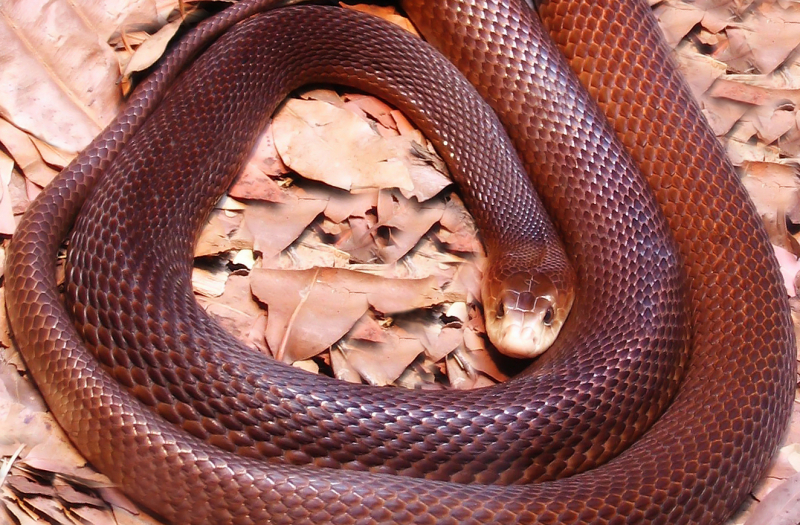
Photo: wikipedia 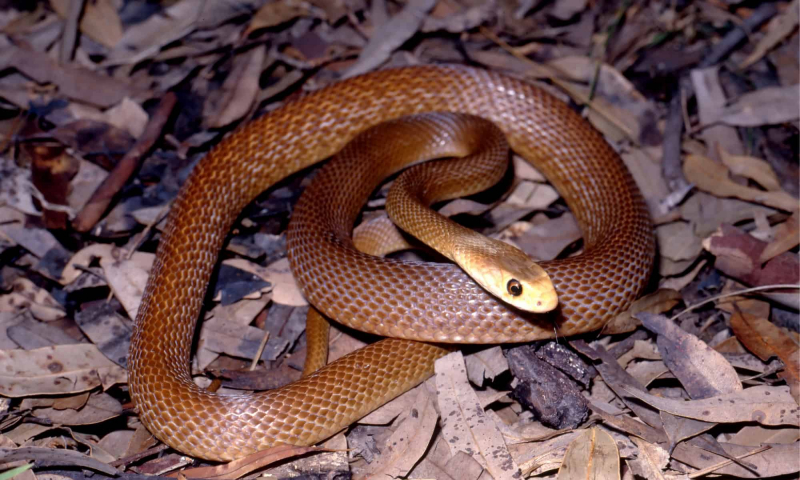
Photo: a-z-animals.com -
The next position on the list of the most dangerous animals in the world is Death Adder. An Australian native species of death adder is the death adder. It is among the most poisonous terrestrial snakes in the world and in Australia. Although it is still widespread, the current Australian cane toad invasion is becoming a greater threat to it.
None other than a snake might be the last of Australia's most dangerous creatures. The Death Adder, also known as Acanthophis, excels in using camouflage to evade predators and seek prey in this instance. The length of its fangs during an assault allows its poison to reach deeper layers of skin. This land snake, which may grow to be 70 to 100 centimeters long, typically hunts small animals and birds.
Though we can actually discover them in numerous woods and grassland around the East and South coasts of Australia, the majority of them are located in the Sydney bushland. These species typically hide in places with grass and foliage. Out of all the snakes in Australia, the death adder bite strikes the victim the fastest. When poisons are released, paralysis may result. Within six hours of being bitten, the venom can be fatal if not treated.
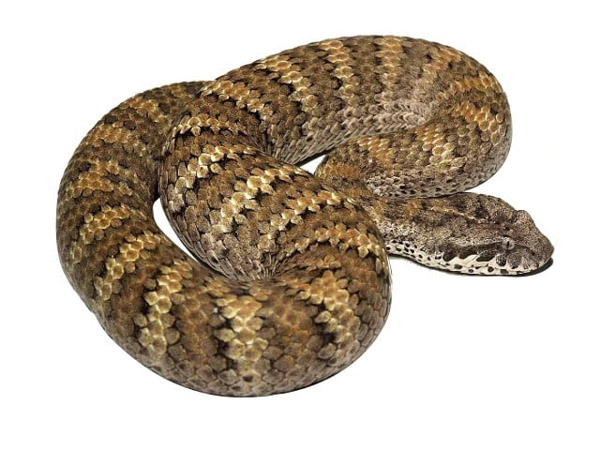
Photo: soc-pet.com 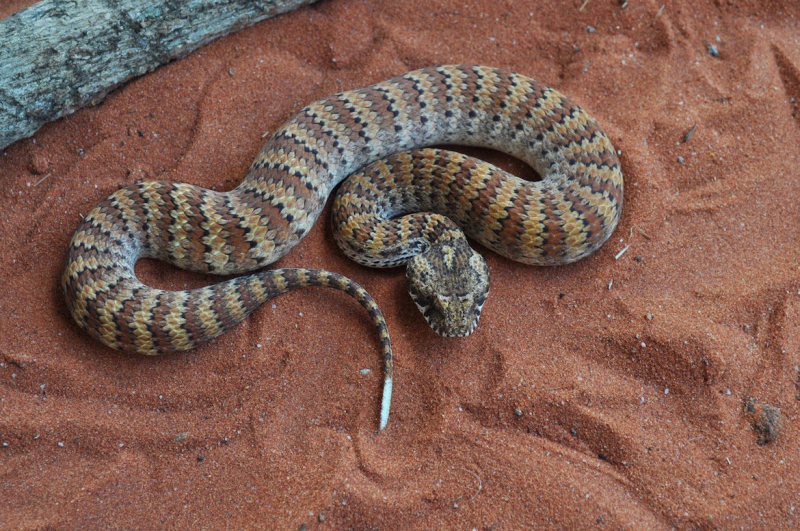
Photo: roaring.earth












